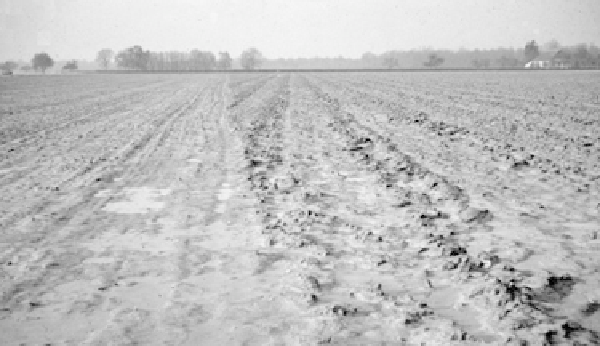Geoscience Reference
In-Depth Information
use, sometimes still less, are needed to erode it completely. At the scale
of human life, such destruction is permanent!
8.5
CONSERVATION AND UTILIZATION
8.5.1 Slaking and Erosion
Because of acidification and disappearance of clay, Luvisols are found to
be sandy or silty in the surface horizon and depleted of bases. But clay
and calcium ensure in large part the cohesion of the particles (concept of
structural stability
). Then acid, silty soils, when denuded (ploughing, crops
providing sparse cover), are particularly sensitive to the beating action
of raindrops. The aggregates on the surface are broken down; a
slaking
crust
is formed and water can no longer infiltrate the soil (Fig. 8.13). Such
a situation is unfavourable from various points of view:
Fig. 8.13
Slaked leached soil, the structure of which is degraded on the surface by rain and
runoff. Northern France.
Photo
: R. Bouzigues.
Poor establishment and survival of seedlings.
Lateral circulation of water on the surface, which increases
erosion and translocation of various substance (phosphorus,
pesticides…).
Poor infiltration of water, limiting the recharge of phreatic
groundwater.
These phenomena, whose importance has long been underestimated,
affect certain great agricultural regions of the world. Man must better
manage the Luvisol capital that Nature has bequeathed to him. For this,
it is necessary to ensure a high content of organic matter (>2%), avoid

